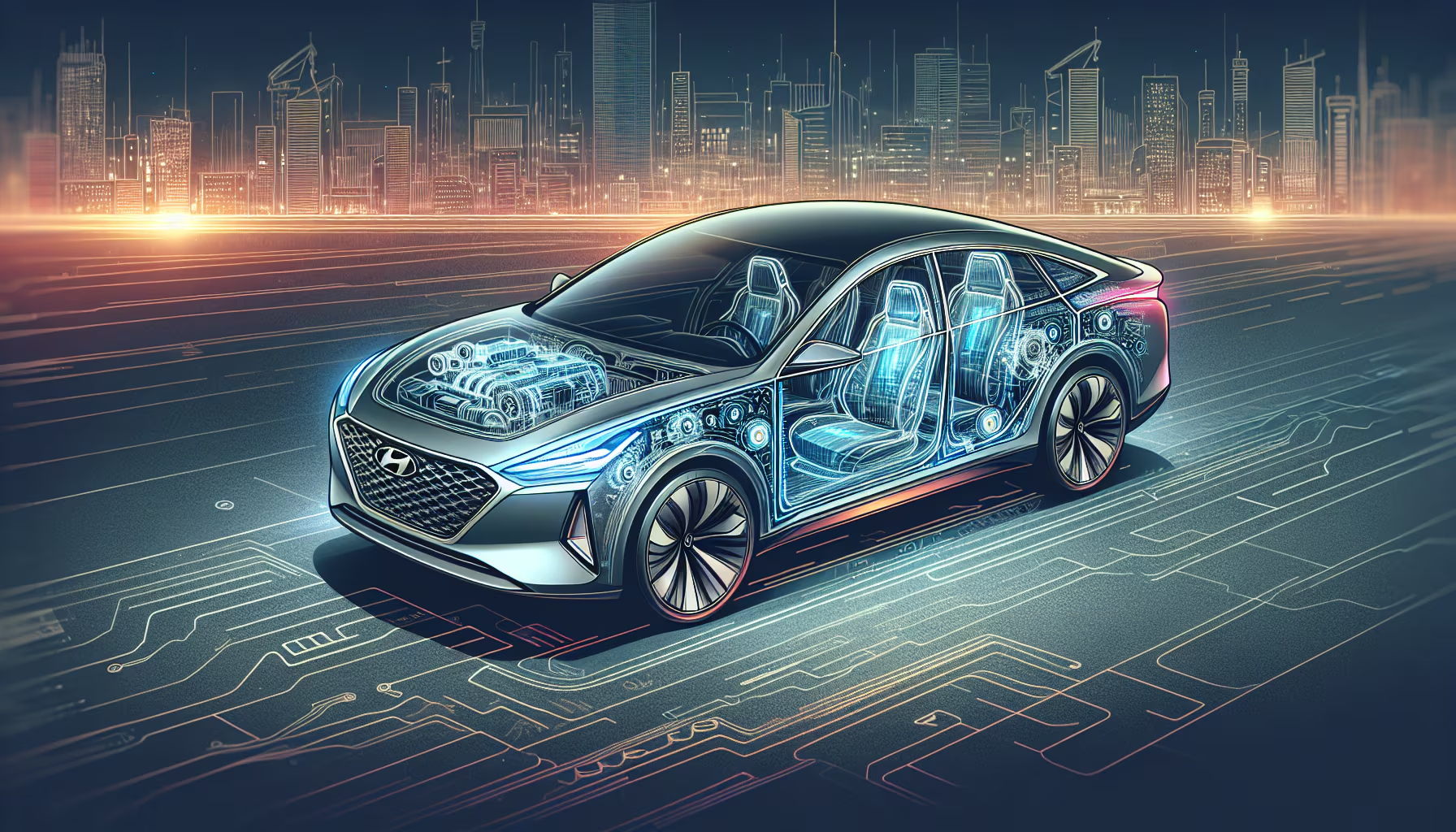Hyundai Motor Company, a leading global automotive manufacturer, has established itself not only through its efficient production processes and strong market presence but also through its innovative car designs. This article delves into Hyundai’s approach to design innovation, examining key strategies, notable examples, and the impact of their designs on the automotive industry.
Understanding Hyundai’s Design Philosophy
Hyundai’s design philosophy is rooted in several core principles that emphasize innovation, customer-centricity, and aesthetic appeal. Central to their approach is the concept of “Sensuous Sportiness,” which combines sensuous forms with dynamic proportions to create an emotional connection with customers. This philosophy aims to evoke passion and excitement through design while ensuring functionality and practicality.
Key Elements of Hyundai’s Design Philosophy
- Fluidic Sculpture 2.0 : Introduced in 2014, this design language emphasizes fluid lines and expressive surfaces, creating a sense of motion even when the vehicle is stationary.
- Proportion and Balance: Hyundai focuses on achieving balanced proportions that enhance aerodynamics and improve efficiency without compromising on interior space or comfort.
- Innovative Lighting: Advanced lighting technologies, such as LED headlights and taillights, are integrated into Hyundai’s designs to enhance visibility and create a distinctive visual signature.
Also Read : Hyundai Car Design Inspiration
Innovations in Hyundai’s Car Designs
Hyundai has consistently pushed the boundaries of automotive design, integrating cutting-edge technologies and materials to enhance both form and function. Several innovations highlight their commitment to advancing car design:
1. Eco-friendly Materials
Hyundai has been at the forefront of using eco-friendly materials in automotive interiors. For instance, the Hyundai Ioniq 5 features seats made from sustainable materials like recycled plastics and natural fibers. This not only reduces environmental impact but also appeals to eco-conscious consumers.
2. Aerodynamic Enhancements
Aerodynamics play a crucial role in vehicle performance and efficiency. Hyundai’s designers incorporate aerodynamic enhancements such as active grille shutters and smooth underbody panels to reduce drag and improve fuel efficiency. The Hyundai Sonata, for example, boasts a coefficient of drag (Cd) of just 0.27, making it one of the most aerodynamically efficient sedans in its class.
3. Advanced Driver Assistance Systems (ADAS)
In addition to aesthetics, Hyundai prioritizes safety and convenience through advanced driver assistance systems (ADAS). Models like the Hyundai Palisade offer features such as adaptive cruise control, lane-keeping assist, and automatic emergency braking, which not only enhance driver safety but also reflect Hyundai’s commitment to integrating cutting-edge technology seamlessly into their designs.
Case Studies: Hyundai’s Iconic Designs
1. Hyundai Tucson
The Hyundai Tucson has been a standout model in Hyundai’s lineup, renowned for its distinctive design language and practicality. The latest generation of the Tucson showcases Hyundai’s “Parametric Dynamics” design philosophy, featuring bold geometric shapes and a futuristic exterior that sets it apart in the competitive compact SUV segment.
2. Hyundai Ioniq 5
As Hyundai’s first dedicated electric vehicle (EV) built on the Electric-Global Modular Platform (E-GMP), the Ioniq 5 exemplifies Hyundai’s commitment to sustainable mobility and innovative design. Its retro-futuristic styling, characterized by clean lines and a spacious interior, has garnered widespread acclaim and positions Hyundai as a leader in the EV market.
Impact of Hyundai’s Designs on the Automotive Industry
Hyundai’s innovative car designs have had a significant impact on the automotive industry, influencing trends and setting new standards in design, technology, and sustainability.
1. Shaping Consumer Preferences
By focusing on Sensuous Sportiness and incorporating advanced technologies, Hyundai has successfully captured the attention of consumers looking for stylish, technologically advanced vehicles. The success of models like the Hyundai Sonata and Hyundai Kona Electric underscores the growing demand for well-designed, eco-friendly cars.
2. Competitive Advantage
Hyundai’s commitment to design innovation has strengthened its competitive position in the global automotive market. The company’s ability to blend aesthetics with functionality has enabled it to differentiate itself from competitors and attract a diverse customer base.
3. Driving Sustainability
Through initiatives like the Ioniq brand for electric vehicles and the use of eco-friendly materials, Hyundai is driving sustainability in the automotive industry. By integrating sustainable practices into their design and manufacturing processes, Hyundai is not only meeting regulatory requirements but also responding to consumer demand for environmentally responsible products.
Future Directions: Hyundai’s Vision for Design
Looking ahead, Hyundai continues to innovate and evolve its design philosophy to meet the challenges of an increasingly competitive and environmentally conscious market.
1. Electric Mobility
Hyundai’s future design direction will likely be heavily influenced by the shift towards electric mobility. Models like the upcoming Hyundai Ioniq 7 SUV and the Hyundai 45 Concept demonstrate Hyundai’s commitment to leading the charge in electric vehicle design, offering innovative solutions that combine range, performance, and design aesthetics.
2. Digital Integration
With advancements in digital technology, Hyundai is exploring opportunities to integrate smart features and connectivity into their vehicle designs. This includes enhanced infotainment systems, augmented reality displays, and seamless integration with mobile devices, reflecting Hyundai’s vision of connected, intelligent vehicles.
Conclusion
Hyundai’s journey in automotive design is a testament to its commitment to innovation, sustainability, and customer satisfaction. By leveraging advanced technologies, embracing sustainable practices, and pushing the boundaries of design creativity, Hyundai continues to set new benchmarks in the automotive industry. As consumer preferences evolve and technology advances, Hyundai’s adaptive approach ensures that its designs remain relevant, inspiring, and influential in shaping the future of mobility. Whether it’s through eco-friendly materials, advanced driver assistance systems, or iconic electric vehicles, Hyundai’s innovative car designs are poised to drive the industry forward into a new era of automotive excellence.
(source)
Originally posted 2024-07-01 08:45:59.
